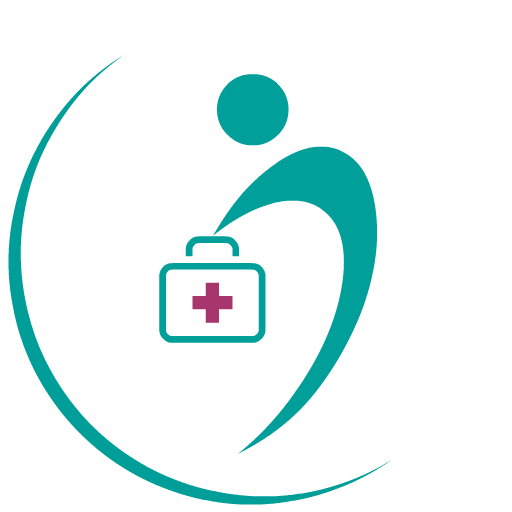Legg-Calve-Perthes disease, also known as Perthes disease or avascular necrosis of the femoral head.
It is a rare childhood condition that affects the hip joint.
It primarily occurs in children between the ages of 4 and 10, and it involves the temporary loss of blood supply to the femoral head (the rounded top of the thigh bone), leading to bone death and deformity.
In this article, we will explore the causes, symptoms, diagnosis, treatment options, and long-term management of Legg-Calve-Perthes disease, providing a comprehensive guide for patients, caregivers, and healthcare professionals.
What is Legg-Calve-Perthes Disease?
Legg-Calve-Perthes disease is a condition characterized by the disruption of blood flow to the femoral head, resulting in the death of bone tissue. This interruption in blood supply leads to the gradual collapse of the femoral head and subsequent deformity of the hip joint. The exact cause of the disease is still unknown, but it is believed to involve a combination of genetic and environmental factors.
Legg-Calve-Perthes disease primarily affects children during their growing years when the bones are still developing. Boys are more commonly affected than girls, with a male-to-female ratio of approximately 4:1. The condition typically affects only one hip, although bilateral cases (both hips) can occur, albeit less frequently.
Causes and Risk Factors
The underlying causes of Legg-Calve-Perthes disease are not yet fully understood. However, several factors contribute to its development. Genetic predisposition plays a role, as certain gene mutations or variations have been associated with an increased risk. Environmental factors, such as trauma or injury to the hip joint, may also contribute to the condition.
Age and gender are significant risk factors for Legg-Calve-Perthes disease.
Other potential risk factors include certain medical conditions like blood clotting disorders, chronic illnesses, and bone abnormalities. Additionally, lifestyle factors, such as obesity and a sedentary lifestyle, may increase the risk of developing the disease.
Symptoms and Diagnosis
Recognizing the signs and symptoms of Legg-Calve-Perthes disease is crucial for early diagnosis and treatment. The condition often presents with the following symptoms:
Hip or groin pain: Children may experience pain or discomfort in the hip joint, which can worsen with activity.
Limping or favoring one leg: A noticeable limp or a change in the way a child walks may indicate an issue with the hip joint.
Limited range of motion: Stiffness and reduced mobility in the hip joint can be observed.
Muscle atrophy: Over time, the muscles around the affected hip may become weaker and smaller.
If Legg-Calve-Perthes disease is suspected, a thorough medical evaluation is necessary. Diagnosis often involves a combination of physical examinations, medical history assessment, and imaging tests. X-rays, magnetic resonance imaging (MRI), and bone scans can help evaluate the condition of the hip joint, identify bone abnormalities, and determine the stage of the disease.
Early diagnosis is crucial, as it allows for timely intervention and management strategies to minimize long-term complications.
Stages of Legg-Calve-Perthes Disease
Legg-Calve-Perthes disease progresses through four distinct stages, each characterized by different changes in the hip joint and bone structure:
Initial stage (necrosis): This stage involves the interruption of blood supply to the femoral head, leading to bone death (necrosis).
Fragmentation stage: In this stage, the dead bone gradually breaks down into fragments, which can cause pain and further deformity.
Reossification stage: New bone begins to form in the shape of the femoral head, replacing the fragmented bone.
Healing and remodeling stage: The new bone gradually remodels, restoring the shape and structure of the femoral head.
The duration of each stage can vary from several months to a couple of years, depending on the individual and the severity of the condition.
Treatment Options
The treatment approach for Legg-Calve-Perthes disease aims to relieve symptoms, preserve hip joint function, and promote proper bone development. The choice of treatment depends on various factors, including the child's age, stage of the disease, and severity of symptoms. Treatment options include:
Non-surgical interventions: In the early stages of the disease, non-surgical approaches may be recommended. These can include activity restrictions, pain management with medications, and physical therapy to maintain hip joint mobility and muscle strength.
Surgical interventions: Surgery may be considered in cases where conservative treatments do not yield satisfactory results or when the disease is advanced. Surgical options include femoral osteotomy (reshaping the femur to improve joint mechanics) or hip joint reconstruction.
Rehabilitation and physical therapy: Regardless of the chosen treatment approach, rehabilitation and physical therapy play a vital role in the management of Legg-Calve-Perthes disease. Physical therapy aims to improve hip joint mobility, strengthen the muscles around the hip, and restore normal gait and movement patterns. It may include exercises, stretching, aquatic therapy, and assistive devices if necessary.
Long-term monitoring: Regular follow-up visits with healthcare professionals are essential to monitor the progress of the disease, assess the effectiveness of the chosen treatment, and make any necessary adjustments. X-rays and other imaging tests may be performed periodically to evaluate the healing process and track bone growth.
Management and Lifestyle Modifications
Managing Legg-Calve-Perthes disease involves a comprehensive approach that goes beyond medical treatments. Here are some strategies and lifestyle modifications that can help:
Pain management: Utilizing pain management techniques such as over-the-counter or prescribed medications, heat or cold therapy, and rest can help alleviate discomfort and improve quality of life.
Maintaining mobility: Encouraging regular physical activity within the limits recommended by healthcare professionals is crucial. Activities such as swimming, cycling, and low-impact exercises can help maintain joint mobility, muscle strength, and overall fitness.
Healthy lifestyle: Promoting a healthy lifestyle that includes a balanced diet, regular exercise, and maintaining a healthy weight can have a positive impact on the overall well-being of individuals with Legg-Calve-Perthes disease.
Assistive devices: Depending on the individual's needs, healthcare professionals may recommend assistive devices such as crutches, walkers, or braces to provide support and aid in mobility.
Long-term Outlook and Complications
The long-term outlook for individuals with Legg-Calve-Perthes disease varies depending on several factors, including the stage of the disease at diagnosis, the effectiveness of treatment, and individual factors. With proper management and timely intervention, many children with Legg-Calve-Perthes disease go on to lead active and fulfilling lives. However, there can be potential complications associated with the condition, including:
Hip deformity: If left untreated or not appropriately managed, Legg-Calve-Perthes disease can result in permanent hip deformities, such as an uneven hip joint or a flattened femoral head. These deformities can affect hip function and lead to long-term mobility issues.
Joint stiffness: Stiffness in the hip joint may persist even after treatment. Physical therapy and regular exercise are crucial for maintaining joint flexibility and preventing long-term stiffness.
Leg length discrepancy: Legg-Calve-Perthes disease can sometimes lead to a difference in leg length, where one leg is shorter than the other. This discrepancy can be managed with orthotic devices or, in severe cases, with surgical interventions.
Early arthritis: In some cases, Legg-Calve-Perthes disease can increase the risk of developing early-onset arthritis in the affected hip joint later in life. Regular follow-up visits and appropriate monitoring can help detect any signs of arthritis early and manage the condition effectively.
It is important for individuals with Legg-Calve-Perthes disease to maintain a lifelong relationship with healthcare professionals specializing in orthopedics to ensure ongoing monitoring, address any potential complications promptly, and develop strategies for long-term joint health.
Support and Resources
Dealing with Legg-Calve-Perthes disease can be challenging, both physically and emotionally. Seeking support from healthcare professionals, support groups, and organizations can provide valuable resources and guidance. Some resources that can be beneficial include:
Pediatric orthopedic specialists: Consulting with orthopedic specialists who have experience in treating Legg-Calve-Perthes disease can provide expert guidance and personalized care.
Patient and caregiver support groups: Joining support groups can connect individuals and families facing similar challenges, providing a platform for sharing experiences, advice, and emotional support.
Online resources: There are reputable websites and online forums dedicated to Legg-Calve-Perthes disease, offering educational materials, treatment updates, and community support.
Remember, seeking emotional support is just as important as seeking medical care. Connecting with others who have experienced or are currently dealing with Legg-Calve-Perthes disease can provide reassurance and a sense of community during the journey.
Prevention and Early Intervention
While Legg-Calve-Perthes disease cannot be entirely prevented, certain measures may reduce the risk or minimize its impact:
Regular check-ups: Regular well-child check-ups with healthcare professionals can help identify any potential risk factors or early signs of the disease. Early intervention is key to ensuring the best possible outcome.
Maintaining a healthy lifestyle: Encouraging a healthy lifestyle for children, including regular exercise and a balanced diet, can promote overall bone health.
Safety precautions: Taking appropriate safety precautions to prevent trauma or injury to the hip joint, such as using protective equipment during sports activities, can help reduce the risk of developing Legg-Calve-Perthes disease.
By focusing on prevention and early intervention, healthcare professionals and families can work together to minimize the impact of Legg-Calve-Perthes disease on a child's life.
FAQs (Frequently Asked Questions)
Can Legg-Calve-Perthes disease affect both hips?
Yes, Legg-Calve-Perthes disease can affect both hips, although it is less common. It is known as bilateral Legg-Calve-Perthes disease when both hips are involved. Bilateral cases may present additional challenges and require more extensive treatment and management.
Is Legg-Calve-Perthes disease a hereditary condition?
While there can be a genetic component to Legg-Calve-Perthes disease, it is not always hereditary. Certain gene mutations or variations may increase the susceptibility to the condition, but it does not necessarily mean that a child will develop it if a family member has had the disease.
At what age is Legg-Calve-Perthes disease usually diagnosed?
Legg-Calve-Perthes disease is most commonly diagnosed between the ages of 4 and 10 when children are still growing. However, it can occasionally be diagnosed in older children or adolescents, although these cases are rarer.
What is the role of physical therapy in the treatment of Legg-Calve-Perthes disease?
Physical therapy plays a crucial role in the treatment of Legg-Calve-Perthes disease. It aims to improve hip joint mobility, strengthen the muscles around the hip, and maintain proper gait and movement patterns. Physical therapists design individualized exercise programs to address specific needs and promote optimal recovery.
Can Legg-Calve-Perthes disease be cured?
Legg-Calve-Perthes disease cannot be "cured" in the traditional sense. However, with appropriate treatment and management, the symptoms can be minimized, the hip joint can be preserved, and the child can lead a normal and active life. The ultimate goal is to provide pain relief, restore hip function, and prevent long-term complications.
Blogs
Stay connected to health experts and read what they have to say via DocSmart.
Please sign up to create your own blog





